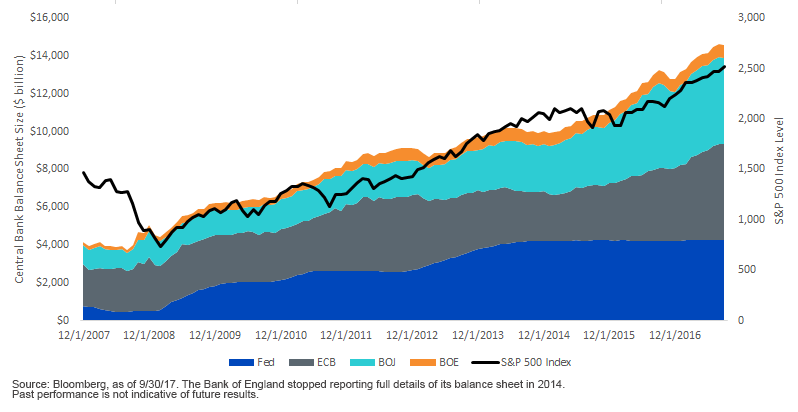Is the “normalizing monetary policy musical chairs” trend now moving in the European Central Bank’s (ECB) direction? The Federal Reserve (Fed) started the process in December 2015 by beginning to remove its zero interest rate policy and followed the process to its next step, paring down its balance sheet starting in October. The Bank of Canada joined the rate-hike party in July, while the Bank of England is widely expected to follow suit at one of its remaining two policy meetings in 2017. All eyes within the global financial markets are now on the ECB, and the question becomes: Is the result of its recent meeting the beginning of its normalizing process (tapering) or just an adjustment to its existing bond buying program (moving the goalposts)?
Heading into the most recent ECB convocation, comparisons were being made to the Fed’s Ben Bernanke-induced taper tantrum here in the U.S. However, there are certainly a host of differences that stand out as the markets reacted to this announcement—namely, the level of the respective 10-Year yields. The U.S. Treasury 10-Year yield pre-taper tantrum in 2013 was 1.93%, while the German bund yield prior to the ECB’s latest meeting was .47%. Perhaps the biggest difference between these two episodes is that when Bernanke first spoke of possible tapering in May 2013, it was widely unexpected (thus the negative reaction), while the ECB’s decision was very much expected and became more a matter of what the tapering plan would look like, not whether it was going to scale back its asset purchases.
Global Central Bank Balance Sheets

Prior to the October 26 meeting, the markets essentially were operating under three different possible scenarios (the current pace of buying is €60 billion/month through December 2017):
1. Pace reduced to €40 billion/month through December 2018.
2. Pace reduced to €30 billion/month through September 2018.
3. Pace reduced to €20 billion/month through June 2018.



















Leave A Comment